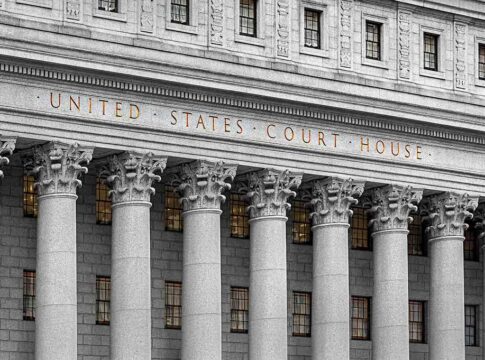A federal appeals court has lifted restrictions that had previously blocked executive orders limiting collective bargaining rights for federal employees. The ruling emphasizes presidential authority in matters of national security while dealing a substantial blow to federal employee unions. Why did the majority of judges prioritize national security?
Court Ruling Strengthens Presidential Authority
The May 17 ruling by the D.C. Circuit Court of Appeals marks a significant shift in the balance between executive power and federal labor rights. The 2-1 decision allows the Trump administration to move forward with its plans to limit collective bargaining for workers at more than a dozen federal agencies deemed critical to national security operations.
Circuit Judges Karen Henderson and Justin Walker, who formed the majority opinion, emphasized the importance of presidential discretion in matters of national security. They wrote that “preserving the President’s autonomy under a statute that expressly recognizes his national-security expertise is within the public interest,” establishing a clear precedent for executive authority in this domain.
A federal appeals court on Friday lifted a block on an executive order from President Trump that seeks to strip union rights from federal workers at dozens of agencies and offices. https://t.co/rH9NevxH7v
— The Washington Post (@washingtonpost) May 17, 2025
Impact on Federal Agencies and Workers
The executive order specifically exempts agencies with national security missions from bargaining obligations with unions. This includes major federal entities such as the Departments of Justice, State, Defense, Treasury, Veterans Affairs, and Health and Human Services, which collectively employ hundreds of thousands of federal workers.
The administration has consistently argued that union activities could potentially hinder these agencies’ critical national security functions. The court’s decision accepted this reasoning, overturning Judge Paul Friedman’s earlier injunction that had temporarily blocked implementation of the executive order.
The appeals court’s majority said the union had failed to show that it would suffer the type of irreparable harm that would justify the preliminary injunction.https://t.co/ClqJopAinh
— The Epoch Times (@EpochTimes) May 19, 2025
Union Opposition and Dissenting Opinion
The National Treasury Employees Union, representing approximately 160,000 federal employees, has strongly opposed the executive order as an infringement on labor rights. They argued that the order violates both labor protections and constitutional provisions, concerns that were acknowledged in the dissenting opinion.
Circuit Judge J. Michelle Childs wrote the lone dissent, questioning the administration’s claims of imminent harm. She noted that “the Government does not identify imminent harm warranting emergency relief,” suggesting that the case should have been allowed to proceed through normal judicial channels without emergency intervention.
The majority opinion also highlighted a procedural issue, noting that the union had not paid a financial bond typically required in such cases. This technical factor contributed to the court’s decision to lift the injunction, allowing the administration to proceed with implementing the controversial changes to federal labor relations.

